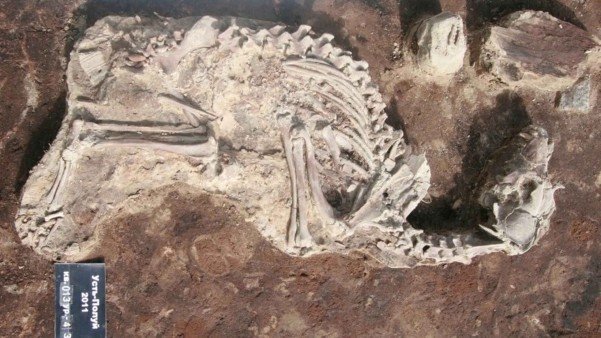The close relationship between people and dogs stretches back thousands of years. Researchers estimate canines were first domesticated somewhere around 33,000 years ago.
But just how closely did man and his best friend get along in the millennia to come is still often hotly debated. A new discovery in Siberia of a 2,000-year-old doggy graveyard sheds light on man’s unique relation to his canine companion.
Archeologists near the Arctic Circle in Russia said the abundance of dogs at the Ust-Polui archaeological site, more than 115 in all, were extraordinary. Typically they only see around 10 at a particular site.
One of the researchers who spoke with LiveScience said that dogs in those days were regarded in several ways just as they are today both as pets and workers. Their relationship also extended into something we frown upon today, though some cultures still do it: sources of food. Oh and they may have also been sacrificed in some forms of religious ceremonies.
But first and foremost dogs in ancient cultures above the Arctic Circle were used for pulling sleds. Some may have also been trained to herd reindeer. Archeologists suspect this in part because a reindeer harness was found at the site.
By the mere existence of the graveyard supposes the people cared for their hard working dogs. But as the case may be in the frozen tundra today, when food is scarce, sometimes the situation can get grim. More than a few mushers have been known to eat their dogs in the winter when they would have starved.
Researchers searching the site at Ust-Polui found butcher marks on many of the bones, indicating the dogs had been consumed as well. Some evidence even points to ritual sacrifice, which is well known in the area, Robert Losey, an archeologist at the University of Alberta in Canada told LiveScience.
“At one place in the site, the heads of 15 dogs were piled together, all with their brain cases broken open in the same manner,” he said.
Photo credit: LiveScience








